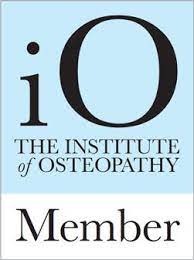What is the difference between an osteopath and a chiropractor?
Osteopaths and chiropractors are highly qualified healthcare professionals. Osteopaths and chiropractors are often discussed in the same circles, and their roles in treating musculoskeletal injuries overlap significantly in many cases, however, there are several key differences between the two professions.
Both osteopathy and chiropractic treatments have been practiced in western medicine since the 19th century. Osteopathy was first introduced by Andrew Taylor Still in 1874, whilst Daniel David Palmer pioneered chiropractic treatments in 1895. Whilst the two therapies have become more similar over the years, even in their early incarnations, there were striking similarities between an osteopath and a chiropractor: it is thought that Palmer even trained under Still for a short period of time.
Are you wondering whether you need to see an osteopath or chiropractor for lower back pain or which could help relieve your trapped nerve? Here’s everything you need to know about modern osteopaths and chiropractors.
What is an osteopath?
An osteopath is a highly qualified complementary medical professional. Osteopaths have either achieved a Bachelor’s (BSc) or Masters of Science (MSc) degree. In addition, they complete over 1,000 hours of supervised patient-facing clinical training within their course before they are qualified to practice on their own, meaning that they have extensive experience and medical training. Osteopaths are experts in the musculoskeletal system and how it relates to other systems in the body. They tend to specialise in manual therapy techniques, physical therapy, and other hands-on health advice and can treat ailments across the full spectrum of the musculoskeletal system.
What is a chiropractor?
Like an osteopath, a chiropractor is also a complementary medical professional. However, the chiropractor’s focus is primarily on the joints and the spine. Chiropractors often use spinal adjustments as part of their treatments: these focus on restoring the spinal joints’ functionality. By contrast, osteopaths take a much broader, holistic approach to their treatments. Chiropractors hold a chiropractic degree and also undergo supervised training, in a similar way to osteopaths.
Both medical professions are recognised as complementary medical professionals by the NHS. Both medical professionals must take part in regular continuing professional development to validate their licenses and continue to practice in the UK.
Chiropractor vs osteopath?
Both osteopaths and chiropractors are trying to achieve the same goals in ensuring you’re comfortable in everyday life. However, they use slightly different techniques to reach them. The skills and techniques used within musculoskeletal care have advanced considerably in the past 30 years. In addition, a significant investment in clinical research has been made into musculoskeletal conditions and treatments during this time. As a result, both professionals can achieve better outcomes within their practices.
Often patients choose to visit an osteopath or chiropractor based on prior experience or because of recommendations from friends or family members. These are great reasons to make an initial appointment. Still, before you proceed with a full course of treatment, it’s important to resonate with a healthcare practice and ensure that the practitioner you are working with understands your goals.
If you’re not sure whether an osteopath or a chiropractor will be best suited to you, we are pleased to offer a Free 30-Minute Consultation to discuss your unique needs. For example, will an osteopath or chiropractor be better suited to help your neck pain? How could we help you? We will take the time to explain this and so much more.












